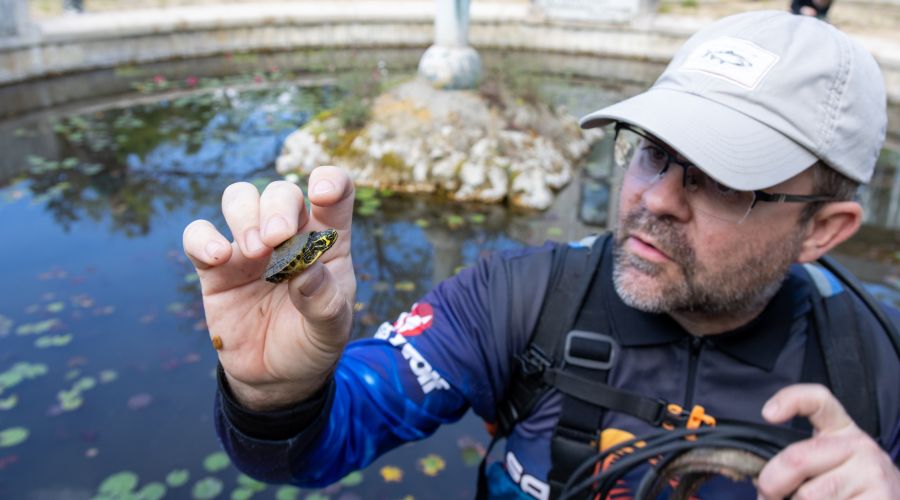Business trip report, Hungary, students

For the second year, the field trip with students was organised to visit sites with a strikingly high diversity of non-native species in Hungary, especially in the thermal water localities. We started our excursion visiting the biological station on the shore of Lake Neusidler in the town of Illmitz (Austria), where Gilbert Hafner gave us an engaging presentation of the history of the Lake and, on a short walk around the biological station showed the local phenomenon of salt marshes, once again hosting a high diversity of wetland and water birds, as well as specific invertebrate fauna.
We had the opportunity to explore the outflows of Lake Héviz, the largest thermal lake in Europe, the Városliget park in the Budapest centre, a thermal tributary of the Barát brook, sites rich for non-native organisms, but also Kis-Balaton artificial wetland constructed to protect Lake Balaton from high nutrient loads. At these locations, students could practically try catching crayfish, fish and macrozoobenthos and thus practically see a very rich community of African and South American cichlids, a syntopic population of spiny cheek crayfish (Faxonius limosus) and red swamp crayfish (Procambarus clarkii), marbled crayfish (P. virginalis) and red cherry shrimp (Neocaridina davidi), very popular with aquarists, and many other non-native species including young false map turtle (Graptemys pseudogeographica), but also critically endangered European pond turtle (Emys orbicularis).
As a new part of the excursion, we visited the Asian market, literally a source of many non-native species. Indeed, besides "traditional releases" of aquarium species to the wild, we are also newly encountering organisms originally intended for human consumption – especially crabs. In order not to leave empty-handed, we purchased North American blue crabs (Callinectes sapidus) imported from Greece, where they are an invasive species, for tasting purposes. Recently, there have also been recordings of their presence in the Danube in Budapest. The blue crabs were a reward after a long day of (cray)fishing when the students enjoyed their cooking and tasting. Another newly visited site was the Limnological Station on the shores of Lake Balaton in the town of Tihány. Here, Péter Takács, Blanka Gál, and Bálint Preiszner presented their activities and took us to a unique system of tanks for mesocosm experiments on the shore of the lake. During the field trip, we were accompanied by our Hungarian colleagues. Special thanks go especially to András Weiperth and Árpád Ferincz.
Author of text and photos: Martin Bláha
